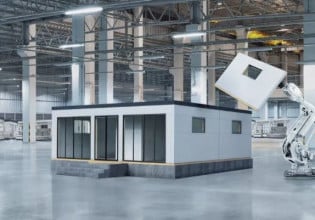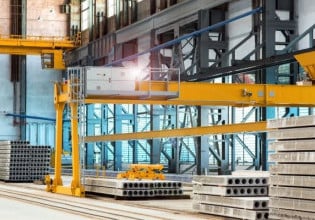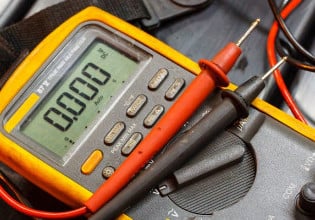Parker Hannifin Introduces New Thermoplastic Hoses to Streamline Hydraulic Capabilities
Parker announces their new sub-zero hydraulic hoses, designed for extreme industrial environments.
A proprietary blend of copolyester materials called paraflex yielded a new thermoplastic created to use hydraulic equipment.

The 593TJ Paraflex hose from Parker Hannifin. Image courtesy of Parker Hannifin.
This new line material is made to withstand high temperatures and is more suitable for complex systems that require tight spaces.
In the fluid power industry, hydraulic lines have a maximum radius to prevent kinks and line leaks. This new thermoplastic bends in tight radii and withstand more cycles of bending.
New Fluid Power Capabilities
Lower operating temperatures means that industries that rely on fluid power can now work longer and increase their workloads and quality. The new hydraulic line can operate in temperatures as low as -56°C or -68.8°F.
This means that time for system warm-up decreases for high-pressure applications like heavy equipment, forklifts, aerial lift equipment, and commercial freezers. In the past, low temperatures would increase the risk for hydraulic line failure due to extreme temperatures, thus increasing the material’s brittleness.
Parker states that their new 563LT hose range offers constant working pressure of 210 for all sizes. They also note that their hoses can bend in a radius of 64mm to 102mm, depending on the hose length.
The Hydraulic Hoses
These capabilities are feasible because of Parker's new Parflex material. These hoses are lighter, more rugged, and handle the same pressure as standard hoses from Parker. The hoses handle, air, hydraulic fluid, and oil water and are 43 series compatible.

The 563LT hose. Image courtesy of Parker Hannifin.
Not only are they preferred for low temperatures, but their maximum operating temperature is also up to 250°F or 121°C and meets SAE 100R17 standards.
These hoses are designed for over the sheave applications in forklifts. This means that less maintenance is required since the work cycle is increased. The parflex hoses are up to 42% lighter than regular rubber hoses and have low length change under pressure.
Completing the Hydraulic System
On top of the mechanical benefits, the parflex hoses have unique chemical compatibility, corrosion resistance, reduced noise level, and ultraviolet resistance capabilities. This hydraulic hose is also steel braid reinforced. Like Parker says, a more flexible hose means fewer connections are needed in a hydraulic system. The fewer connections there are in a system, the less likely failure will occur.
This will then increase the system’s probability of functioning, making it more reliable and requiring less maintenance. Reduced downtimes and low-temperature capabilities give heavy/agricultural equipment operators an advantage to keep their machinery running longer and get ahead of schedules for specific projects.
Fluid power systems can be complicated. Advancements like these hoses aim to change the reputation of fluid power.
Flexible lines that are not prone to cracking will enhance equipment performance and simplify fluid power systems. Parker claims that their new Parflex Hoses have an infinite shelf life when stored in proper conditions than standard rubber hoses.
This new technology is designed to save companies time and money by not replacing hydraulic lines periodically and having to park equipment for the repairs.






